A force acting on a certain particle depends of the particles position in the xy-plane. This force F is given by the expression
→F=(xyˆi+xyˆj)(1N/m2)
where x and y are expressed in metre. If →F is a conservation force ?
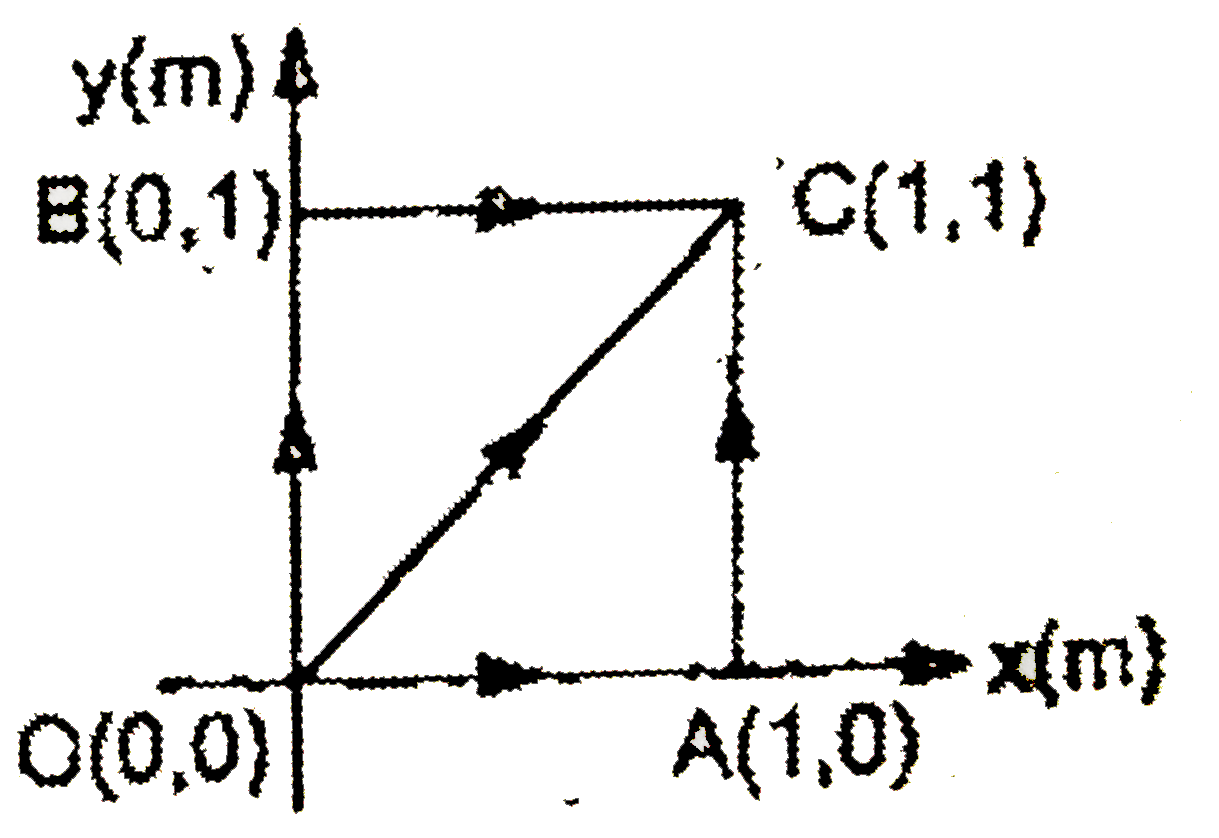
Step by step video & image solution for A force acting on a certain particle depends of the particles position in the xy-plane. This force F is given by the expression vec(F) = (xy hat(i) + xy hat(j)) (1 N//m^(2)) where x and y are expressed in metre. If vec(F) is a conservation force ? by Physics experts to help you in doubts & scoring excellent marks in Class 11 exams.
Updated on:21/07/2023Topper's Solved these Questions
- WORK AND ENERGYBOOK - ANURAG MISHRACHAPTER - WORK AND ENERGYEXERCISE - Level 1
53 Videos
- WORK AND ENERGYBOOK - ANURAG MISHRACHAPTER - WORK AND ENERGYEXERCISE - Level 2
18 Videos
- WORK AND ENERGYBOOK - ANURAG MISHRACHAPTER - WORK AND ENERGYEXERCISE - Matching types problems
14 Videos
- UNIT AND DIMENSIONSBOOK - ANURAG MISHRACHAPTER - UNIT AND DIMENSIONSEXERCISE - Matching Type Problem
4 Videos
Similar Questions
A particle of mass m is moving in the xy-plane such that its velocity at a point (x,y) is given as →v = α(yˆx+2xˆy) where α is a non-zero constant. What is the force →F acting on the particle?
View SolutionOne of the forces acting on a certain particle depends on the particle's position in the xy-plane. This force →F expressed in newtons, is given by the expression →F=(xyˆi+xyˆj) where x and y are in metres. The particle is moved from O to C through three different paths :-
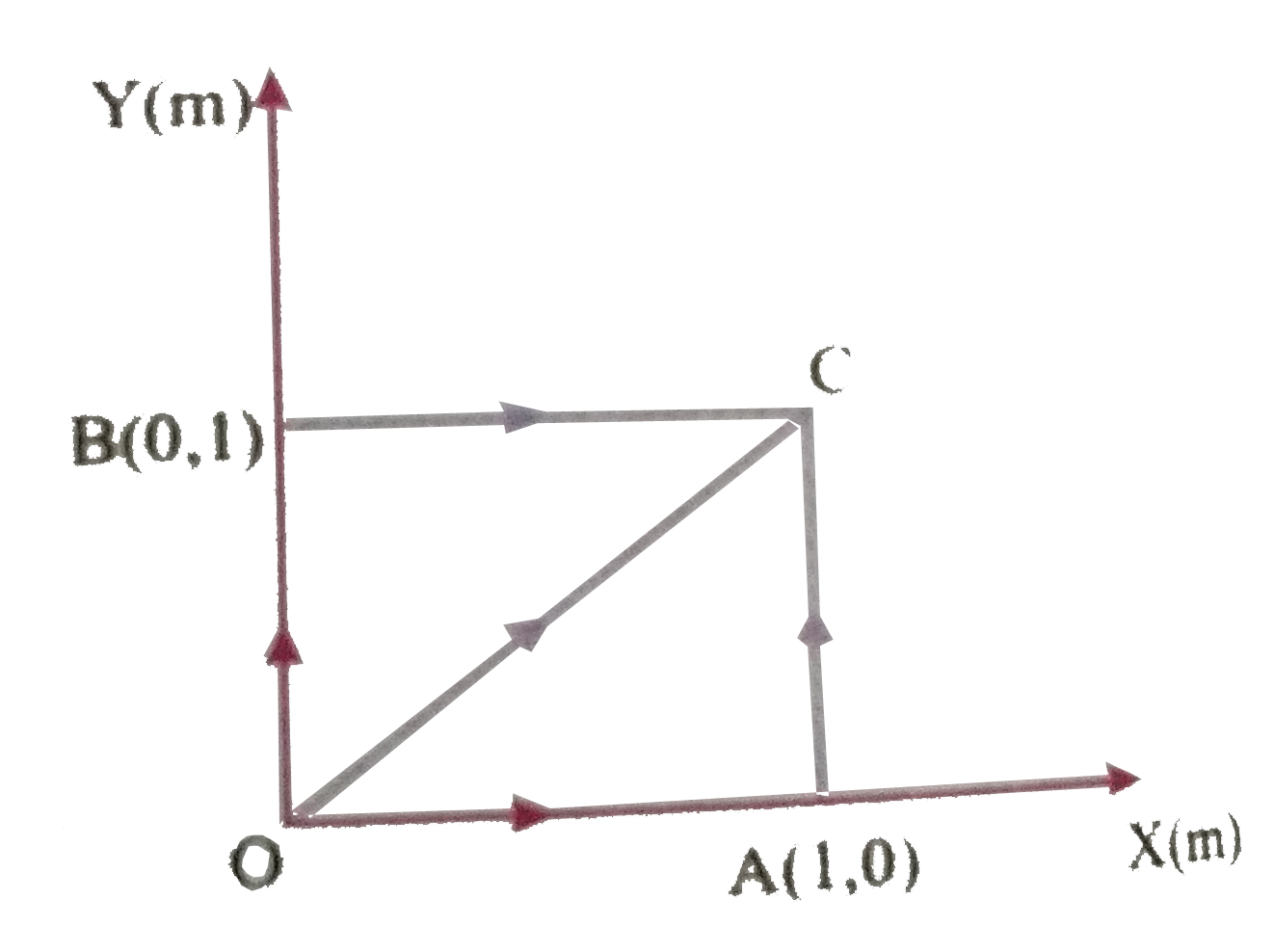
Which of the following can be negative ?
View Solution
Knowledge Check
One of the forces acting on a certain particle depends on the particle's position in the xy-plane. This force →F expressed in newtons, is given by the expression →F=(xyˆi+xyˆj) where x and y are in metres. The particle is moved from O to C through three different paths :-
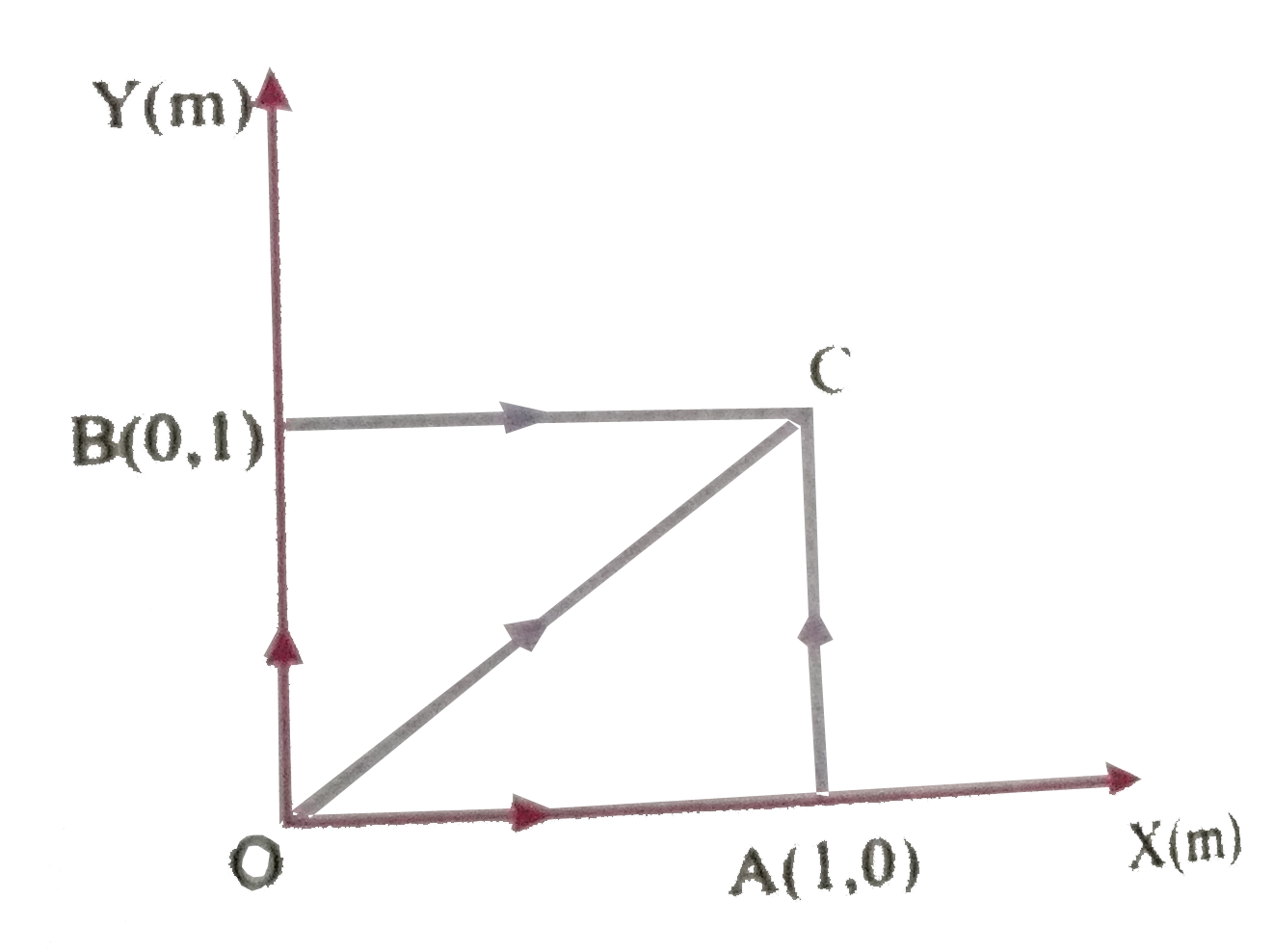
The work done by this force on path OAC is.A12JB−12JC23JD−23JOne of the forces acting on a certain particle depends on the particle's position in the xy-plane. This force →F expressed in newtons, is given by the expression →F=(xyˆi+xyˆj) where x and y are in metres. The particle is moved from O to C through three different paths :-
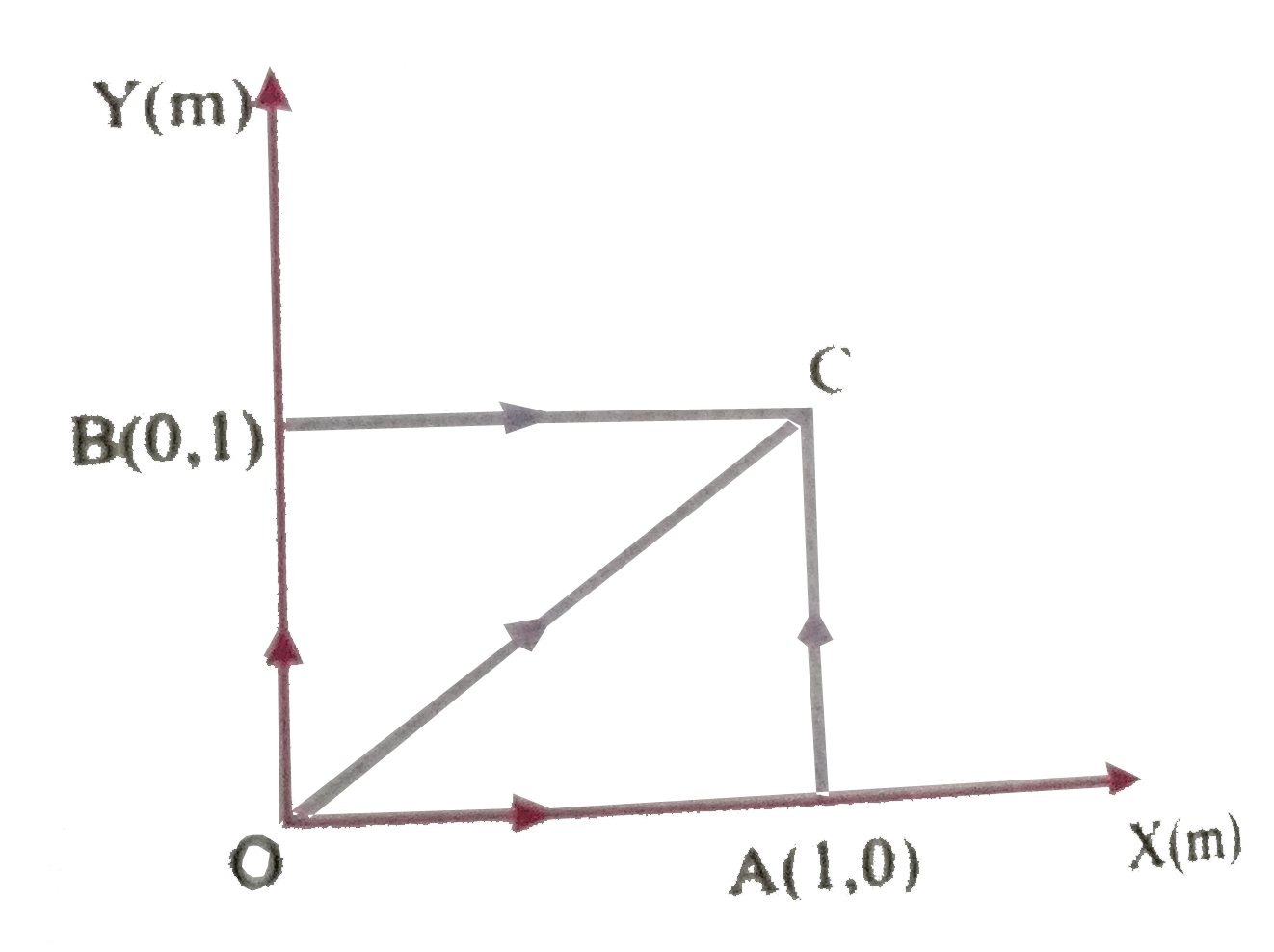
The work done by this force on path OBC isA12JB−12JC23JD−23JOne of the forces acting on a certain particle depends on the particle's position in the xy-plane. This force →F expressed in newtons, is given by the expression →F=(xyˆi+xyˆj) where x and y are in metres. The particle is moved from O to C through three different paths :-
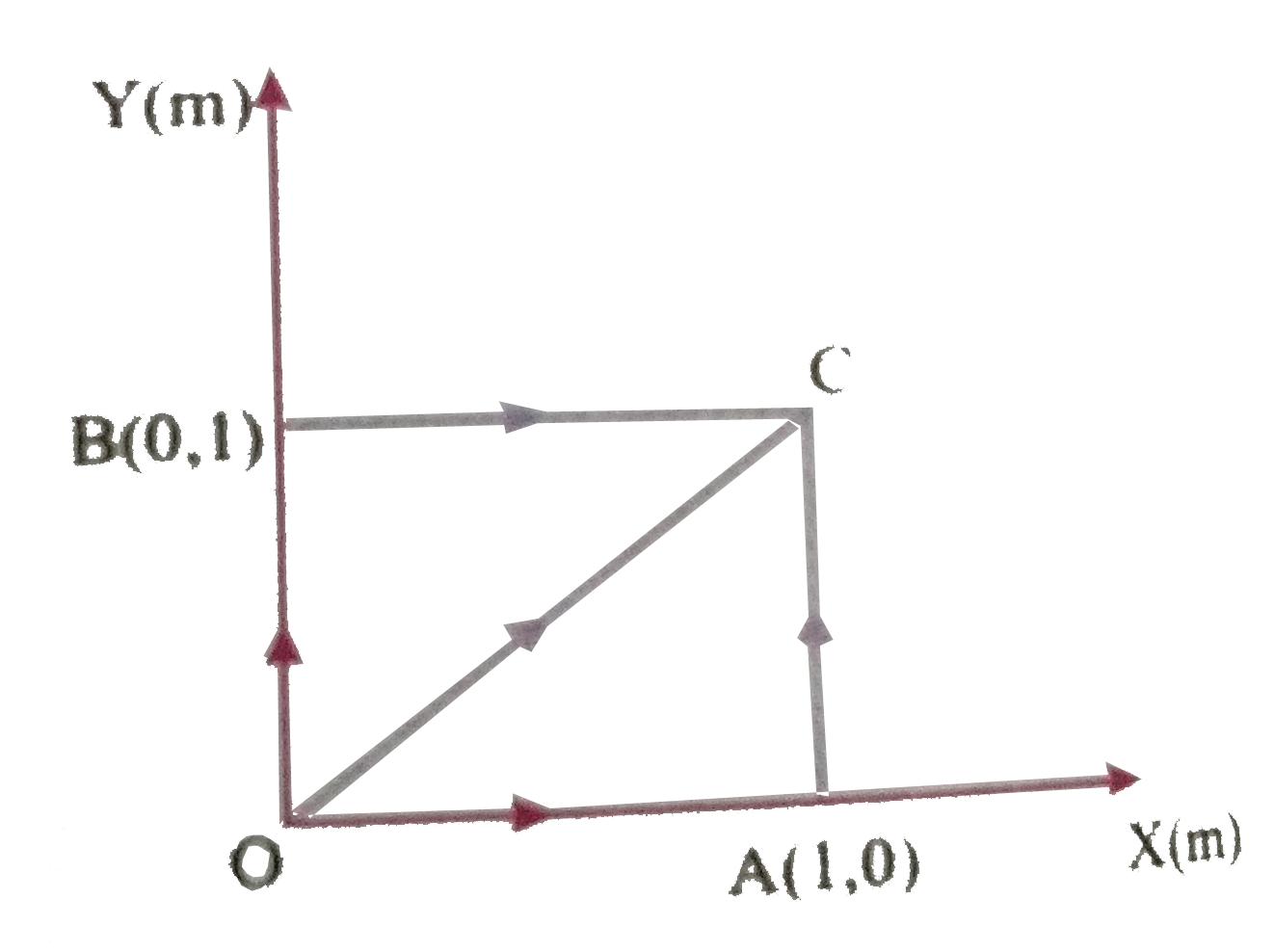
The work done by this force on path OC isA12JB−12JC23JD−23J
If →F=(5ˆi+2ˆj−4ˆk)N, the magnitude of force is
View SolutionA particle moves in the xy plane according to the equation
→r=(ˆi+2ˆj)Acosωt
The motion of the particle is
View SolutionThe position vector of a particle moving in x−y plane is given by
→r=(Asinωt)ˆi+(Acosωt)ˆj then motion of the particle is :
View SolutionA force →F=(5ˆi+3ˆj)N is applied over a particle which displaces it from its origin to the point →r=(2ˆi−1ˆj) meter. The work done on the particle is :
View SolutionConsider a force acting on a particle given as →F=yˆi+xˆj , where ( x, y ) is the instantaneous location of the particle. This type of force is :
View Solution
